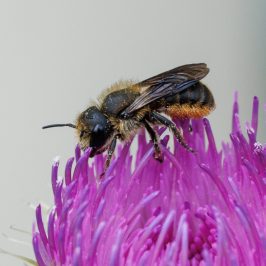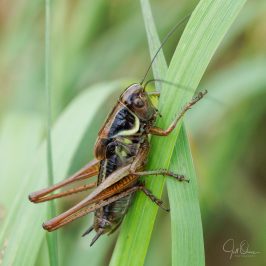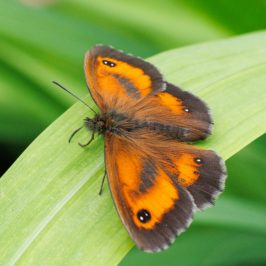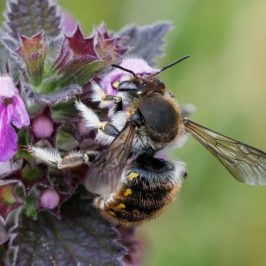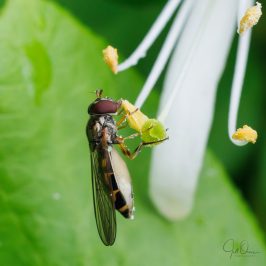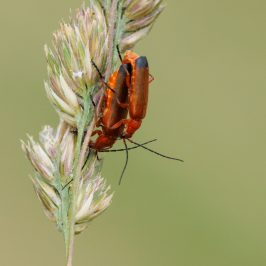It feels as though the Large Red Damselflies have largely deserted our garden now: I haven’t seen a female at either of the ponds for several weeks. For a while we had regular visits by two males, but now this seems to be the only one who’s still keeping faith with us. He’s easily recognisable by the fact that he only has three and a half wings, having lost a large part of his left hindwing some while ago, probably to a bird. The other day we found him visiting the patio pond, but he didn’t stay long and soon turned up again at the wildlife pond, where he spends most of his time basking on a leaf, and occasionally seeing off an Azure Damselfly, just because he can.
According to Brooks & Cham, the mean lifespan for a male Large Red Damselfly is just seven days, though they say that it’s not unknown for them to reach six weeks of age. This individual must be at least that old, and I’m featuring him today because it’s likely that he won’t be with us much longer. I put his longevity down to having had a relatively easy life – apart, of course, from whatever incident cost him half a wing. He was an early adopter of our new pond, when there wasn’t really any odonate competition other than his own kind, and I’ve never seen more than three Large Reds here at any one time. Since then the Azure Damselflies have turned up in reasonable numbers, but they’re much frailer, and don’t cause him any problem.
The other Odonata which have become noticeable by their absence recently are the demoiselles: I’ve seen neither Banded not Beautiful at the stream for a couple of weeks now. But while I was down at the end of the garden this morning, searching the bank-side vegetation for them, a dragonfly flew through the glade – too high for me to see its markings, but from the size and shape I think it was most probably a hawker of some kind. When it disappeared over my head I hurried back to the pond, and warned my small friend here that there was a potential predator in town. Sadly, damselflies are deaf, so I’ll just have to hope that his ageing eyesight isn’t as poor as mine, and that he can avoid becoming someone else’s lunch for a little while longer.
Later in the morning, just before another storm blew through the Shire, I walked around Tilly’s field and had the unusual pleasure of actually watching a grasshopper stridulating – that is, rubbing his hind legs against the edges of his wings, to summon a mate. It’s rare in my experience for them to sit out in the open when they’re calling – presumably because the noise attracts predators as well as other grasshoppers – but as you can see in my extra, which was shot with a long lens through a lot of intervening foliage, he’s quite young and small, and therefore learning as he goes along. He’s also lightning-fast: I took one step too many towards him, and that grass stalk was instantly deserted. Orthoptera aren’t an especially strong suit of mine, and I had him down as either a Meadow or a Field Grasshopper, both of which are common in the village; but I’ve now been told by Someone Who Knows that he’s actually a Common Green Grasshopper. And yes, I know that he isn’t even slightly green, but grasshoppers are tricky like that. And I’ve never recorded one here before, so – result!



